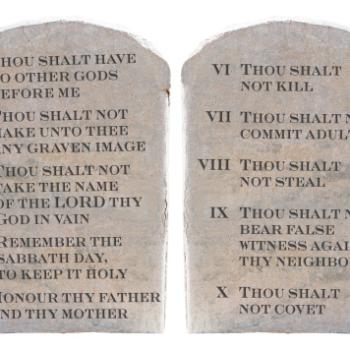 For a long time in church history, the average Christian’s favorite gospel of the four gospels of the New Testament (NT) was the Gospel of John. In the early nineteenth century, it was even the favorite of Frederick Schleiermacher, “the father of liberal theology.”
For a long time in church history, the average Christian’s favorite gospel of the four gospels of the New Testament (NT) was the Gospel of John. In the early nineteenth century, it was even the favorite of Frederick Schleiermacher, “the father of liberal theology.”
But by this time, literary criticism was being applied to the Bible as a result of Enlightenment. From 1880 to 1920, the quasi School of Religions, consisting of leading NT scholars in Germany, was alleging that there is a deep disparity between the first three synoptic gospels–Matthew, Mark, and Luke–and the Gospel of John. To determine the historicity of Jesus, they contended the synoptics were fairly historically reliable, but the Gospel of John is not and therefore must be dismissed. They insisted that the Gospel of John presents a divine Christ (=Jesus is God), and the synoptics do not. Throughout post-apostolic church history, the church had insisted that the Gospel of John did indeed present Jesus as God, that is, that he was God Incarnate.
 As a former Trinitarian Christian for twenty-two years, I wrote a book entitled The Restitution of Jesus Christ (2008; 600 pp.) in which I address the critical biblical texts in depth to show that the NT does not proclaim that Jesus is God, but that only the Father is God, a single person. When I was researching and writing this book, which lasted for twenty-seven years, very few scholars deviated from the common view that the Gospel of John presents Jesus as being God. Yet many of them did not think the Gospel of John was very historically reliable, whereas they did think the synoptics were.
As a former Trinitarian Christian for twenty-two years, I wrote a book entitled The Restitution of Jesus Christ (2008; 600 pp.) in which I address the critical biblical texts in depth to show that the NT does not proclaim that Jesus is God, but that only the Father is God, a single person. When I was researching and writing this book, which lasted for twenty-seven years, very few scholars deviated from the common view that the Gospel of John presents Jesus as being God. Yet many of them did not think the Gospel of John was very historically reliable, whereas they did think the synoptics were.
But during the 1990s, the “Jesus, John, and History” section of the preeminent Society of Biblical Literature had a solid focus on this question of whether or not the Fourth Gospel is historically trustworthy. And they were moving toward the conclusion that it does, thus in opposition to most of the academy. Members of the panel of this section, such as Paul Andersen, Felix Just, and Tom Thatcher, have now produced three volumes on this subject as editors, with contributing chapters being mostly from section members. Their conclusion is that the Fourth Gospel is historically reliable.
So, that confirms what I wrote in my RJC book about the historical reliability of the Gospel of John. All of the following are excerpts for my book:
“This dismissal of the Gospel of John as a reliable source for discovering the historical Jesus resides mostly with scholarship. Christian laity does not accept it. J.D.G. Dunn acknowledges this incongruity between scholarship and laity and explains about it, ‘Probably no issue marks off the bulk of New Testament scholarship so sharply from the piety of the pews than the issue of how the fourth Gospel should be understood.’[1]
“In contrast, Johannine scholar John A.T. Robinson differed with so many of his colleagues by insisting that the Gospel of John is very historically reliable and therefore does not conflict with the Synoptics.[2] This is the view espoused in this book.
Reinterpreting John
“But have these accomplished critical scholars been right in concluding that the traditional interpretation of the Gospel of John is correct, i.e., that the Johannine Jesus is God? In 1984, John A.T. Robinson pointed out that “a considerable reaction has more recently set in in New Testament circles against writing off the historical value of the Johannine tradition—a reaction with which I have long been in sympathy.” Citing A.M Hunter and C.H. Dodd as examples, Robinson concludes that ‘when it comes to the central issue of all, the picture which John gives us of Jesus and the use that we can make of it for doctrine, the criteria have not, I think, been adequately reassessed.’[3]
“Indeed, church fathers and all subsequent traditionalists have misunderstood Jesus’ identity mostly because they have misinterpreted key passages about Him in the Gospel of John, and most critical scholars have endorsed these misinterpretations. Consequently, the primary purpose of this chapter is to heed John A.T. Robinson’s call for a reexamination of the Johannine Jesus and thereby show that this gospel does not present Jesus as God and therefore does not conflict with the synoptic portrait of Jesus. Robinson rightly contends that the Johannine Jesus is not ‘God dressed up as a human being. He is not a divine being who came to earth,’[4] as critics E. Kasemann, P.M. Casey, and other distinguished historical-critical scholars have sarcastically alleged.
………..
Summary
“So, the Gospel of John is the premiere NT book of misunderstanding. Its characters constantly misunderstand Jesus because they think literally when He speaks figuratively. Readers of this gospel often make the same mistake. The foremost example is the traditional interpretation that, more than anywhere else in Scripture, the Gospel of John unambiguously declares that Jesus is God. Surprisingly, most historical-critical scholars accept this interpretation. Using their terminology, they allege that the Jesus of history (mostly in the Synoptic Gospels) and the Christ of faith (mostly in the Gospel of John, which they believe identifies Jesus as God) are in sharp conflict. Many of these critics therefore demand that a choice be made concerning this alleged discontinuity. They choose to dismiss much or all of the Gospel of John, rendering it historically inauthentic, and favor the Synoptic Gospels as providing the more accurate portrait of the real, historical Jesus.
“On the contrary, John’s gospel presents truth, and the traditional understanding of it does not. This interpretation that the Johannine Jesus is “God” rests so much on a mistreatment of Greek grammar in Jn 1.1c, misunderstandings about several of Jesus’ claims about Himself, and, most of all, a misunderstanding of Thomas’ Confession in Jn 20.28. Thus, identity Christology in the Fourth Gospel does not conflict with that of the Synoptics but presents a portrait that coincides with them—that Jesus was a man and not God. The Fourth Evangelist’s stated purpose for writing his gospel is not that Jesus is God; rather, it is the same as that of the synoptists: Jesus is the Christ, the Son of God.
“To verify this identification of Jesus as a man and not God, we need to analyze in some detail several important christological texts in the Gospel of John that have been thought to either expressly or implicitly identify Jesus as God.”
[1] J.D.G. Dunn, “Let John Be John: A Gospel for Its Time,” 298.
[2] J.A.T. Robinson, The Priority of John, 32.
[3] J.A.T. Robinson, Twelve More New Testament Studies, 141. For the historical reliability and truth of John’s portrait of Jesus, see esp. ch. 9.
[4] J.A.T. Robinson, The Priority of John, 393-94.












